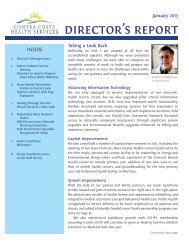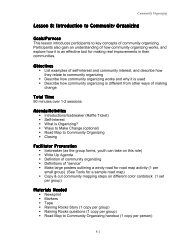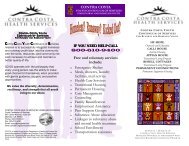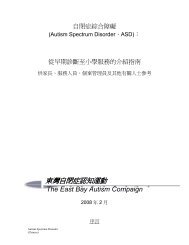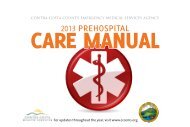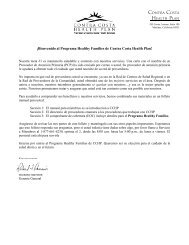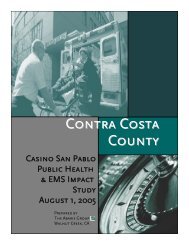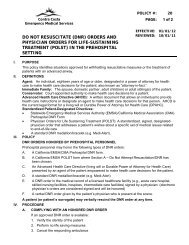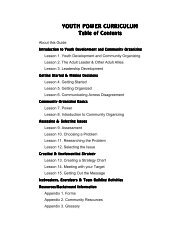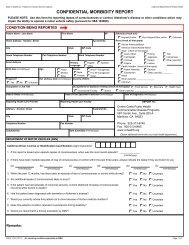EMS Policy Manual - Contra Costa Health Services
EMS Policy Manual - Contra Costa Health Services
EMS Policy Manual - Contra Costa Health Services
Create successful ePaper yourself
Turn your PDF publications into a flip-book with our unique Google optimized e-Paper software.
<strong>Contra</strong> <strong>Costa</strong><br />
Emergency Medical <strong>Services</strong><br />
POLICY #: 30<br />
PAGE: 2 of 2<br />
2. Patients shall not be transported in a prone or "hog-tied" position.<br />
3. The method of restraint must allow for adequate monitoring of pulse and respiration, and<br />
should not restrict the patient or rescuer’s ability to protect the airway should vomiting occur.<br />
4. Restrained extremities should be monitored for circulation, motor function, and sensory<br />
function every 15 minutes along with vital signs and mental status.<br />
5. Patients who are chemically restrained will be placed, whenever possible, on continuous<br />
cardiopulmonary monitoring and pulse oximetry during transport.<br />
6. Prehospital documentation should include behavior reason for restraint, other pertinent<br />
clinical information, and documentation of monitoring of restrained extremities.<br />
D. Other considerations<br />
1. If an unrestrained patient becomes aggressive or assaultive during transport, ambulance<br />
personnel shall make reasonable efforts to calm and reassure the patient and request law<br />
enforcement assistance.<br />
2. If the crew believes their personal safety is at risk, they should not inhibit a patient's attempt<br />
to leave the ambulance. Every effort should be made to release the patient into a safe<br />
environment. Ambulance personnel are to remain on scene until law enforcement arrives to<br />
take control of the situation.



